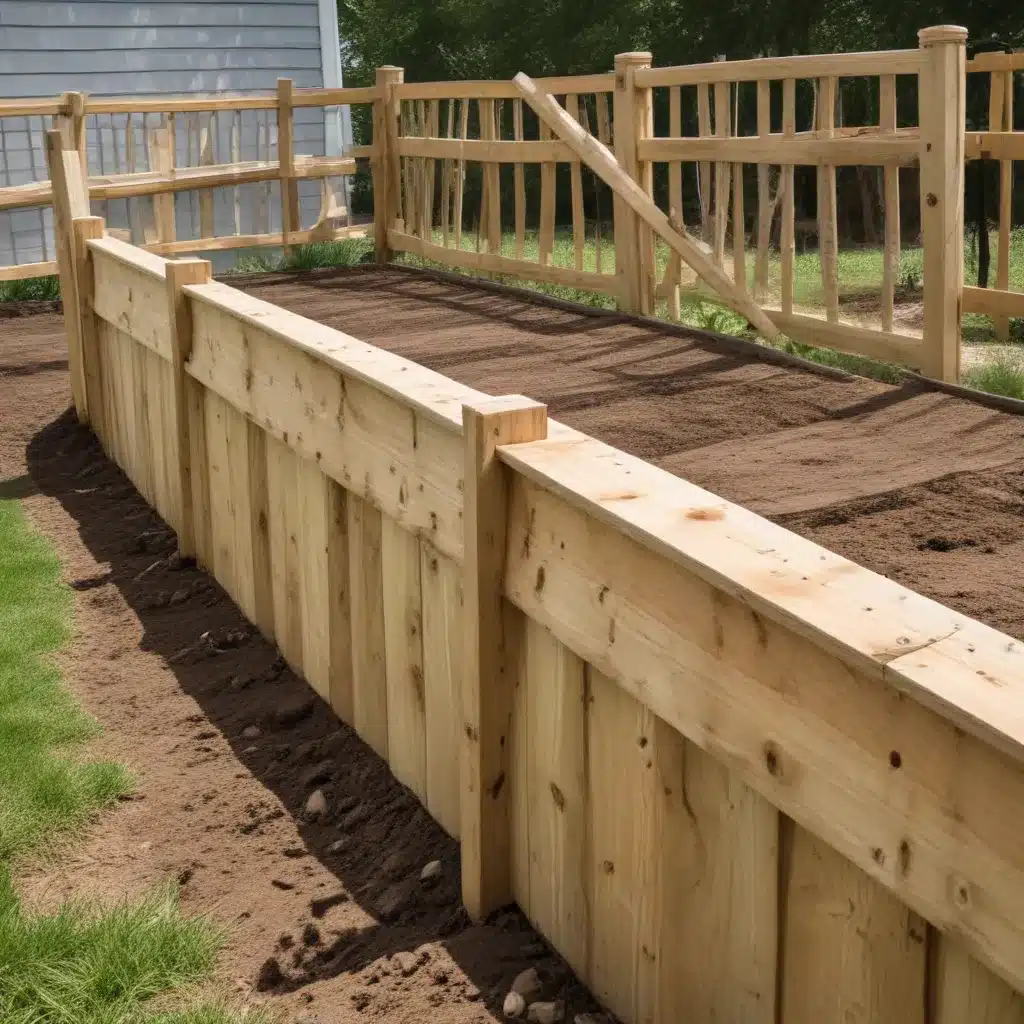
Safeguarding Your Property: Responsible Digging Practices
When undertaking any home improvement project involving fencing or decking in the UK, it is crucial to be mindful of the potential hazards posed by buried utility lines. Failure to properly identify and avoid these underground infrastructure can lead to costly damages, service disruptions, and even serious safety risks. As a responsible homeowner or contractor in the UK, it is your duty to ensure that your digging activities comply with the relevant regulations and industry best practices.
Understanding UK Utility Markings and Regulations
In the UK, the majority of underground utility lines, such as electricity, gas, water, and telecommunications, are marked using a standardized color-coding system. This system helps to identify the type of utility present and guide the necessary precautions during excavation work. It is important to familiarize yourself with these markings and the associated regulations before commencing any digging activities.
According to the Health and Safety Executive (HSE), all utility lines must be clearly marked and identified before any excavation work begins. This is typically done through a process known as “utility location” or “utility mapping,” where a specialist service provider is contracted to map and mark the underground utilities on your property. In the UK, you can request this service through organizations like the Utility Strike Avoidance Group (USAG) or your local utility companies.
The Importance of Accurate Utility Marking
Accurate utility marking is essential to ensuring the safety of your digging activities and minimizing the risk of damage to underground infrastructure. Utility lines can often be buried at varying depths, making it challenging to visually identify their precise location. Relying solely on surface-level indicators or estimates can lead to costly and potentially dangerous consequences.
It is crucial to have a professional utility locator service come to your property and accurately mark the location of all underground utilities. This process typically involves the use of specialized equipment, such as ground-penetrating radar or electromagnetic detectors, to precisely map the utility networks. Once the utilities are marked, it is imperative to respect the designated boundaries and use caution when digging within proximity to these marked areas.
Digging Techniques for Fence and Deck Installations
Manual Digging: A Careful Approach
When installing fence posts or deck footings in the UK, manual digging techniques are often the safest and most effective option, especially when working in close proximity to marked utility lines. This approach involves using hand tools, such as a spade or post-hole digger, to carefully excavate the necessary holes.
Key Considerations for Manual Digging:
– Dig within 0.5 meters (1.6 feet) of any marked utility lines using only hand tools.
– Slowly and methodically remove soil to avoid accidentally striking buried infrastructure.
– Backfill the post or footing hole with tamped crushed rock or a suitable concrete mix to ensure proper support and stability.
– Consider using a square or rectangular form when backfilling to create a more stable base for the post or footing.
Mechanical Digging: Balancing Efficiency and Safety
In some cases, the use of mechanical equipment, such as a powered post-hole digger or a small excavator, may be necessary to efficiently install fencing or decking. However, when working near marked utility lines, extreme caution must be exercised to avoid inadvertent damage.
Guidelines for Mechanical Digging:
– Utilize mechanical equipment only when digging outside the 0.5-meter (1.6-foot) zone around marked utility lines.
– Operate the equipment at a slow, controlled pace to maintain precision and minimize the risk of striking underground pipes or cables.
– Regularly check the depth of the hole to ensure you are not exceeding the recommended depth or inadvertently reaching the utility lines.
– If you encounter any unexpected obstructions or resistance during the digging process, stop immediately and investigate further before proceeding.
Cost Considerations and Sustainable Practices
Budgeting for Fence and Deck Installation
When planning your fence or deck project in the UK, it’s important to account for the potential costs associated with utility location, hand digging, and proper backfilling. These steps, while crucial for ensuring safety and compliance, can add to the overall project budget.
Average Costs for Fence and Deck Installation in the UK (as of September 2024):
– Utility location service: £50 – £150 per property
– Manual digging (per post/footing): £20 – £50
– Backfilling with crushed rock or concrete: £10 – £30 per post/footing
It’s important to factor in these additional expenses when developing your project budget and consider the long-term benefits of safe and responsible digging practices.
Embracing Sustainable Building Practices
In addition to ensuring safety and compliance, homeowners and contractors in the UK should also consider the environmental impact of their fence and deck installations. Incorporating sustainable building practices can not only benefit the environment but also contribute to the overall longevity and performance of your project.
Sustainable Building Practices to Consider:
– Use of eco-friendly, locally sourced building materials (e.g., FSC-certified timber, recycled plastic lumber)
– Incorporation of energy-efficient features (e.g., solar-powered lighting, water-efficient decking)
– Minimization of waste through careful planning and responsible disposal of construction materials
– Adoption of low-impact landscaping techniques (e.g., native plant selection, water-efficient irrigation)
By aligning your fence and deck installation with sustainable building practices, you can not only protect the environment but also enhance the value and long-term resilience of your home improvement project.
Conclusion
Navigating the complexities of buried utility hazards when installing fences and decking in the UK requires a meticulous and responsible approach. By understanding the utility marking protocols, adhering to safe digging techniques, and considering the financial and environmental implications, homeowners and contractors can ensure the successful and compliant completion of their projects.
Remember, the ABC Home team is always available to provide expert guidance and support throughout your home improvement journey. Together, we can create functional and sustainable outdoor living spaces that enhance the value and enjoyment of your property while prioritizing safety and regulatory compliance.
















